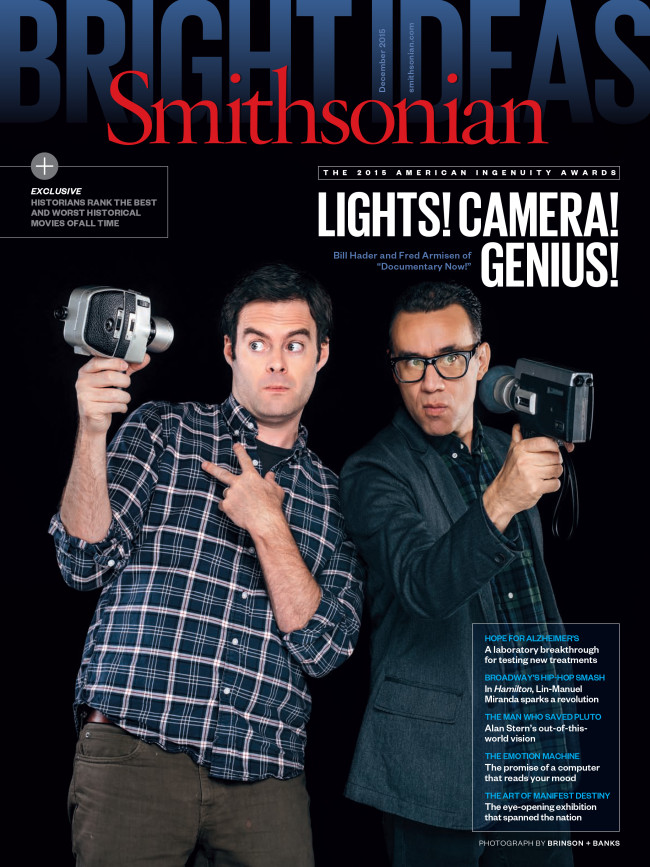
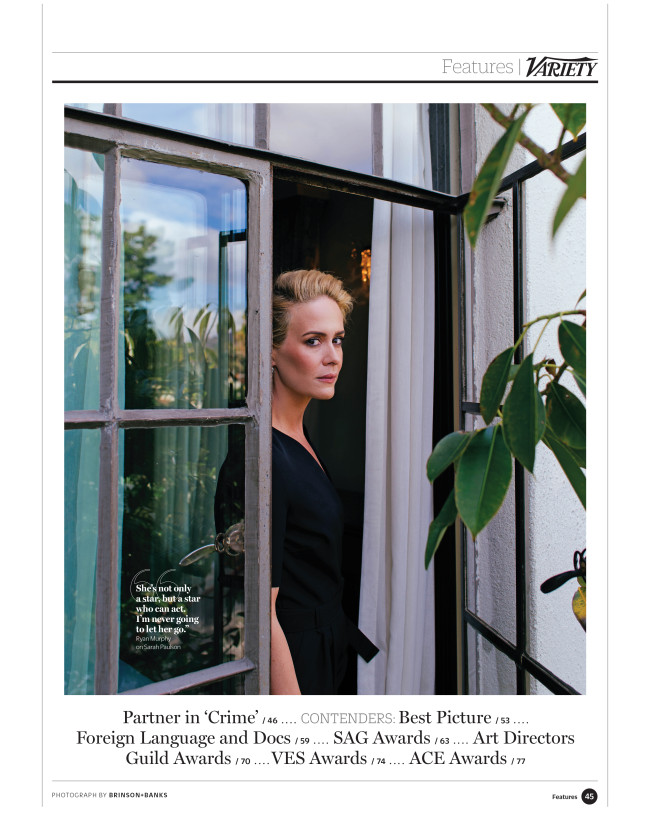
Brinson+Banks
Smithsonian Magazine
Photography Director: Molly Roberts
Variety Magazine
Director of Photography: Bailey Franklin
The Washington Post
Features Photo Editor: Nicole Crowder
The New York Times
Photo Editor: Jolie Ruben/Arts & Leisure
The New York Times
Photo Editor/ Styles Department: Eve Lyons
I know you met in photo journalism class in college. Fast forward to today. Married, photo duo and shooting celebrities. Tell us how this unfolded.
We started off at small newspapers learning the ropes living nine hours apart when we first began dating. Those were really our training grounds where we got a sense of who we were as photographers while learning to shoot and handle literally everything in the book. At this point the newspaper industry was undergoing mass layoffs, and rather than become another statistic we jumped ship to pursue a documentary freelance career, based in Atlanta, GA. We founded and ran a photographic cooperative for 5 years with 4 other photographers, garnering journalistic assignments from outlets like TIME, Mother Jones, Sports Illustrated, FADER, and Rolling Stone to name a few.
By this point we were married home-owners in Atlanta living a pretty comfortable life. So, about a little over two years ago, we decided to turn all that on its proverbial head, start a new company doing something completely different, and we relocated across the entire country to Los Angeles. We threw caution to the wind, loaded up our two dogs, two cats, and road tripped towards our new lives. And while it was a terrifying first year, we couldn’t be happier that we left what was comfortable to follow new dreams.
When we decided to form Brinson+Banks as a new photographic entity to pursue lifestyle advertising we may have been starting over, but not from scratch. We already knew how to market, act professional with a client, and the importance of things like personal work and even sheer drive. So as we set-up meetings with ad agencies in our new home, we also completely revamped and created our new portfolio, creating a new vision as a team. The documentary work we still hold so dear fed the way we approach our lifestyle work. The new style we created together also translated into our portrait work, pushing the limits of the foundation we built for years telling stories through portraits of everyday people for places like The New York Times and The Wall Street Journal. This new style, and our long history of musician portraiture made us a perfect fit for celebrity work. Our journalistic background and the relationship we built with the New York Times, mixed with our new aesthetic, presented us with our first celebrity portraiture assignment. From there, it is just a matter of capitalizing on every single shoot of this nature to prove that we are the person (or persons) that can be creative, fast, reliable, and the type of photographer/director that can work with talent of this magnitude. Even without time or a budget backing us up, which has often been the case as we started down this new path.
With all the celebrity management does one of you handle the team while the other is focused on creative need be?
As two creatives of equal skill and a shared mindset, we have a unique flexibility on set. We approach each shoot differently depending on the players, expectations, and space involved. In some cases, one of us will shoot one scene while the other pays more attention directing and loosening up the subject, and then we trade for the next set up. Sometimes one of us shoots while the other is adjusting lights, fine-tuning the next shot, or even handling the publicist, client or others on set. In many cases we split these duties, and both shoot from different angles as long as it does not feel intimidating to the subject. More often than not, we reverse these roles from one setup to the next, or even trade the camera off when one of us has an idea the other may not have covered off on.
Are you able to turn off your photographic minds and conversation when you’re not working?
HA! We wish, but should remain grateful that we have such an amazing job that we don’t want to turn it off. But yes, when you spend the whole day talking creative concepts, budget, marketing, etc., it’s hard to turn it off at the end of the day, especially when a self-employed commercial/editorial photographer is basically on call 24/7. As newbies to the West Coast of only a couple years, we solve this dilemma by loading up our VW camper van with our dogs and escaping to explore the beaches, deserts, mountains and forests our new home has to offer. It seems to be the best way for us to turn off our work minds and be inspired in another way. That said, we still shoot photos the whole time, and definitely had a creative conference call today for an ad shoot while sitting in the front seat of the van looking at the Pacific. So I guess we will let you know when we find that magic off-switch, but to be completely honest, we met each other in a photojournalism class and that’s where the first sparks flew. At risk of sounding completely cheesy, we fell in love with each other’s photos before we became a couple so photography has always been intertwined in our relationship.
Do you both shoot for each project?
YES. I won’t say we are competitive with one another, but let’s assume that’s a lie by omission. We both do this because it is our passion, and love few things more than creating a new image. We have learned to check our ego at the door over who is pushing the button since the final image belongs to us both, but we still have to each shoot to fill our creative soul. Really it’s more than that though. We have created a shared vision, but we are both still integral to that, and while our images may compliment each other very well, we still each add distinctive views to the project. So whether we are shooting tethered in a lit studio passing the camera back and forth, or shooting in tandem in natural light, we find it important to both contribute.
Are you realizing you turn in twice as much good work?
We are noticing that we have an ability to produce more work at an intense pace that is hard to maintain alone. We have also noticed that clients with a specific shot list end up with a library and want to license more images. But for us, it is more than just a higher quantity. The most value we see added is in the currency of ideas. One of us may have a concept that seems great, but just doesn’t feel right until the other adds their two cents. We shot an image of Gillian Anderson and David Duchovny that we really liked recently. David set up lights, transforming a beige hotel room and hallway into blues and greens, and it felt completely wrong until Kendrick suggested reversing the gelled colors, and suddenly that small difference in opinion made it all come together. Not to mention that we all have off days and these super quick celebrity shoots bring a certain new level of pressure because of time and status, and it is amazing to have someone to lean on, to BE on when you are not.
I’d imagine there is some complementary /contrast between you two. What is each of your strengths and why?
Totally. We share so many taste preferences that our images work seamlessly together, but we are also hyper-focused on very different things. We share a love for natural light, but David is more obsessed with artificial lighting, and things lining up with technical precision. Kendrick is more about the moment and a sense of looseness, which is a perfect balance. David is a bit more serious in his direction of subjects while Kendrick is more adept at building a humorous repertoire throughout the shoot. The strange part about these differences is that despite who shot the image or what approach was taken, we agree on the editing floor nine times out of ten. And another funny note, editors rarely know who took what photo, but often when more than one photo is published for a story, we will both have an image in print for each story.
What are the best aspects of shooting as a team?
While it may be hard to turn work off, we feel lucky to shoot as a team for one reason first and foremost. On top of being a team in business and art, we are in a devoted relationship, and feel so lucky to share this amazing photographic life with the person we love most in the world. So many couples spend but minutes a day together, so we look at what we have as a gift.
As I mentioned before, it is amazing as an artist to let go of your ego enough to create something and collaborate with another artist. We get to do this all the time. And while we are both equally competent photographers in our own right, and even split up to shoot on the same job occasionally, it is incredible to have someone there who can look at your idea, your direction, your shot, and make it even better. Part of it is also just easy logic, too – what client wouldn’t be happy to have the photographer’s first assistant be as good as they are, and shooting at the same time. I fully believe it would be more common if it were not for the facts that you must check your ego at the door, split a paycheck, and share a creative mind and common goals to a freakish degree.
Best advice for any photo duo?
Yes, and that would be to really be honest with yourselves and each other about this endeavor. In many senses you are trying to become one, and you need to make sure your drive, beliefs, goals, and intentions line up, and not just your aesthetic. This is a long term relationship you are entering and should be treated as such. And if you are a couple, you need to ask yourself if your relationship can handle the amount of time and additional stress you are about to spend together, and if you can keep the perspective that you as a couple is more important than you as a business.
For the second concept on our shoot with Bill Hader and Fred Armisen for Smithsonian, we had the props and space to shoot, but it would be nothing without the emotion. We had already built a rapport with our subjects for the cover shot, and the tension was gone by our second setup. Instead of directing, we just placed Hader and Armisen and left them to their own devices. They started an improv dialogue going back and forth impersonating Obama talking about his LA shopping trip at The Grove, a popular outdoor mall. As we laughed behind the camera, they gave us real laughter that spoke to their comedic triumphs without the need for either to hold a rubber chicken.
How much time did you have for the Contender’s shoot with Variety with the subjects?
A couple minutes per subject for the most part, and even less in some instances. We have had celebrity shoots with easy time tables, but this one was all about preparation, and a head-first dive into connecting with subjects. We shot 48 subjects in all that day, so there was not a lot of time or margin for error. To prepare for the shoot we brainstormed, and even setup a light test at our home the week before the shoot. This gave us the ability to secure the additional grip and gear we needed for our concept ahead of time, and walk in relatively confident. We still arrived hours early to transform a hotel suite into our studio and fine-tune our concept. Once the subject arrives it is all about feeling out their energy, personality, and quickly reacting in a way that they will respond to.
How did the set(s) work? Did you both shoot different set ups?
For that particular shoot, we just had space for one setup, so we traded off shooting per subject. This was actually kind of vital though as we had a constant stream of subjects, sometimes in line outside our V-flats. So not only did we have to stay on point, building a new dialogue every few minutes, but we were shooting handheld with a digital medium format camera and a ring flash which is a surprisingly heavy rig. For this shoot, trading off helped us each stay in peak form for the duration. Because of the limited space we could only do one setup, but knew we needed three for one specific subject (singer Sam Smith). So we solved that by using the V-Flats we had to block light as a black backdrop, utilizing the natural light form the curtain behind our main setup. For the third, we added a little color gelled flare magic sparkle dust to the black backdrop – a Brinson+Banks trade secret ;-)
What’s the biggest difference for you in shooting news journalism vs. commercial magazines? How different is your creative approach, if at all?
The approach is different in that now we are expected to control the situation, and make the image instead of assess the situation and take the image. It’s really all the same – we are still looking for the same light, color, and emotion as we were before, but just with a different directive. It is a different world working with a publicist, and a crew, and a sharp time table as opposed to photographing a chicken catcher in rural Alabama or a political campaign trail, but all the same general principles and sensibilities apply. We are still just trying to connect, feel, and create.
That being said, it does take getting used to to have someone over your shoulder looking at your photos as you take them. There’s a looseness where everything is up to you on where you point your camera and what lens you use and who you focus on in a documentary shoot that can feel amazing versus the truly collaborative feel of a commercial or portrait shoot–the personality is as important as the photography, as are the creative ideas beforehand.
How was living in LA shaped your personal work?
We both grew up in the South so that became our visual language–greens and giant trees and a certain kind of light. Los Angeles has greatly re-shaped our personal work and personal lives and just being in such a diverse new landscape really inspired us right when we arrived. The light is different, the plants are different, being in a new place can really put an extra pep in your photographic step (that’s why traveling can be so fun). But beyond living in a huge city, LA has been the gateway to the West Coast and the deserts, beaches, mountains and vast in-between it has to offer. We take our rare free time to load up our dogs into our VW van and to camp and hike and just generally wander and that has been the fuel that has fed us creatively and given us new perspective, and a much-needed reprieve from our work hive-mind. Just to catalogue our own lives, we created our Instagram hashtag #westcoastexplorersclub to remind us of the importance to always lead a life well lived while we build our career (even if we’re still doing client calls from inside the van).
How did the Conan O’Brien shoot unfold as a favorite?
Our shoot with Conan O’Brien was our favorite in a long while, which is saying a lot because there’s some steep competition. We got to play on his set and have fun with it. Conan ended up interviewing us about how we met after he noticed and mentioned our chemistry on set. It doesn’t hurt that two of the three of us were redheads, which doesn’t happen often so Kendrick and Conan got to talk about their ” gingervitis.”
Our shot list with O’Brien included one shot on his mark where he delivers his monologue and one in his dressing room. As it goes with so many well-laid plans we got to the Burbank studio and the mark shot felt boring, and his dressing room was too busy to make the dramatic image we envisioned. Fortunately for us, we started the day by making friendly with everyone we met, and were given a tour around to see other options. We came across a mirror standing alone backstage with the quintessential vanity mirror lights where Conan quietly reflects before he goes on stage, and we instantly knew it was our new spot.
We also found another space to the side of the stage that we liked simply because of the color and shapes it offered. As we setup our lights, we made friends with the director of stage lighting who kindly supplemented our strobes with continuous lighting used for the show. It was also this new friend who helped us flood the stage wall with blue light with Conan reflected in the warm light of the off-stage mirror through an open door. Despite the fact it wasn’t used in print, it was still one of our favorites, and wouldn’t have come about without the new relationship we made.
And as a side note, while David was shooting that setup, Kendrick was directing Conan from backstage, and told him to turn around and repeat a move in the mirror and said it should be his new signature move, to which he replied, “No, that’s David’s signature move. We call it The David.”
Tell us how you ended up on Conan O’Brien’s set, I thought you were the photographers?
Before the shoot, Kendrick said out loud that she wanted something fun like Conan standing on his desk, but we held back because we were told not to ask for goofiness. What we did instead was build a rapport with our subject while standing at his mark, and then open the door to him for something more collaborative. And what does he do but offer to pose as the thinking man on his desk. So we got our funny photo after all because we connected with our subject – that and the universe smiled on us.
Then to take the cake at the end of the shoot, rather than take a bad selfie, Conan offered us a seat on stage for a faux interview and a memory that really made our day. And then of course, we ended the day with a group hug – seriously though, we did.
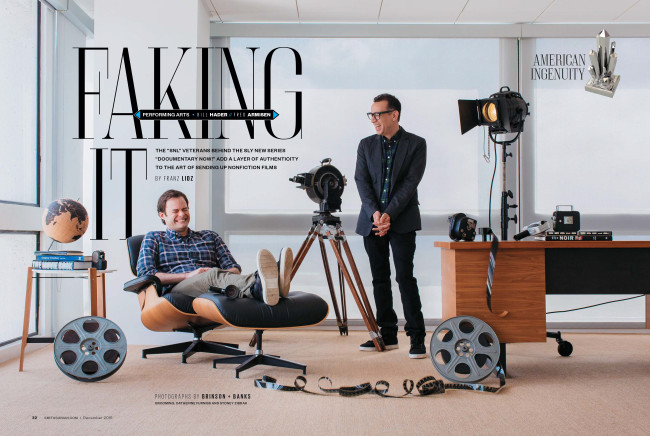

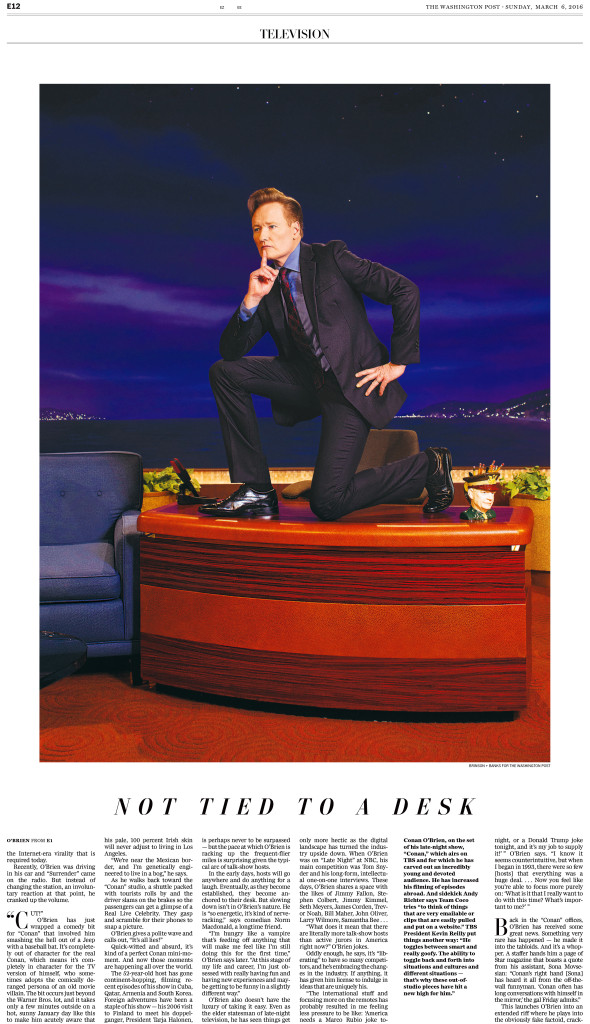

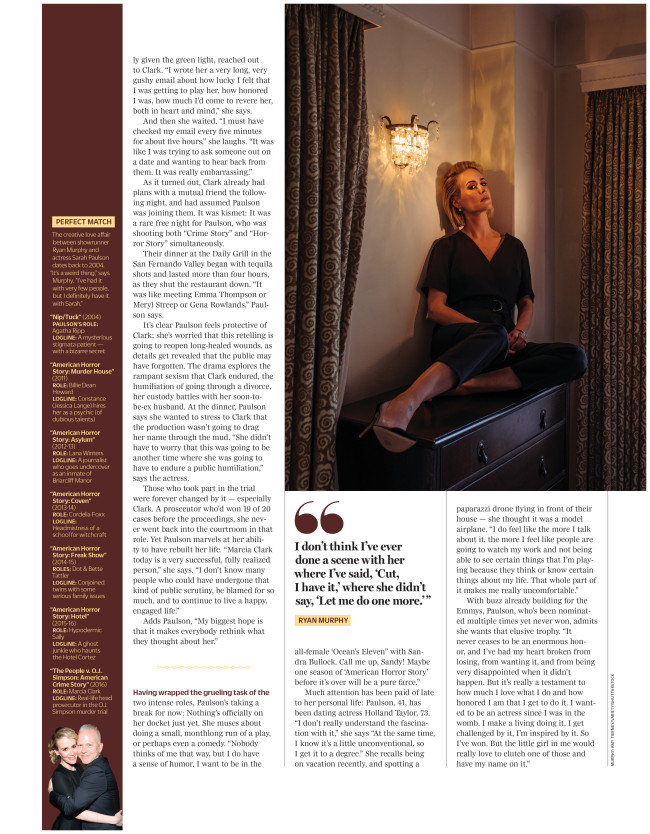
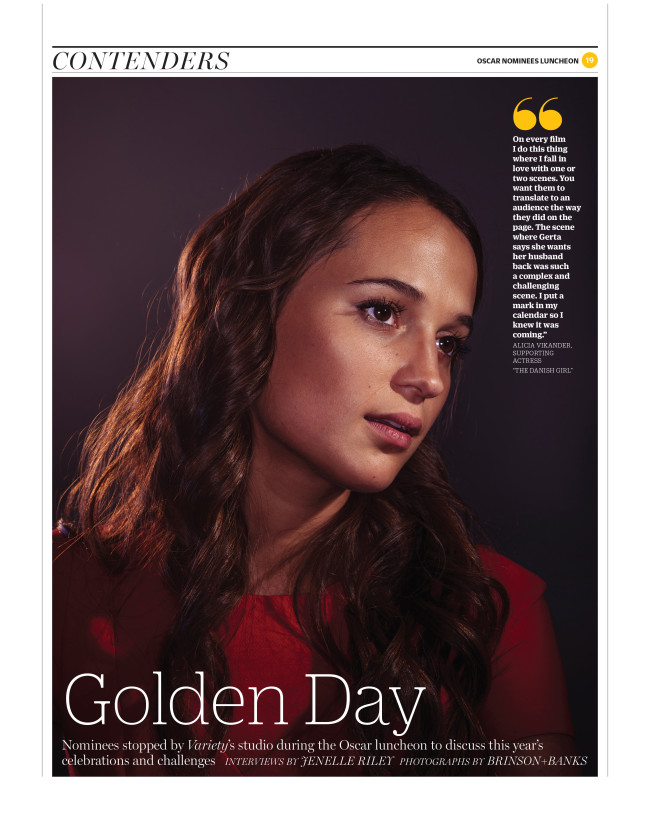


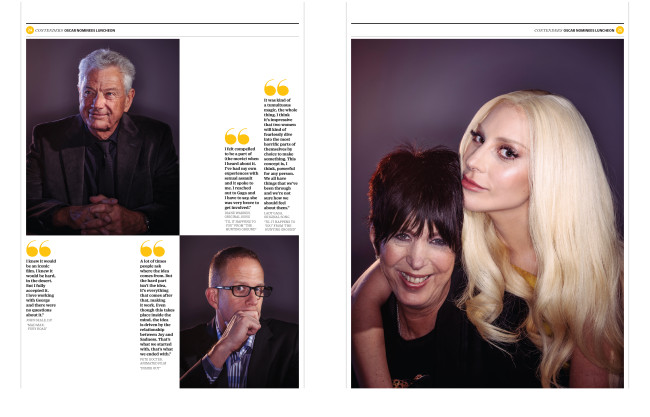
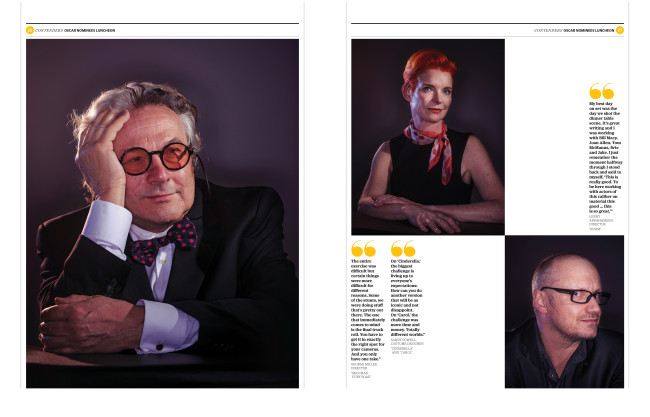


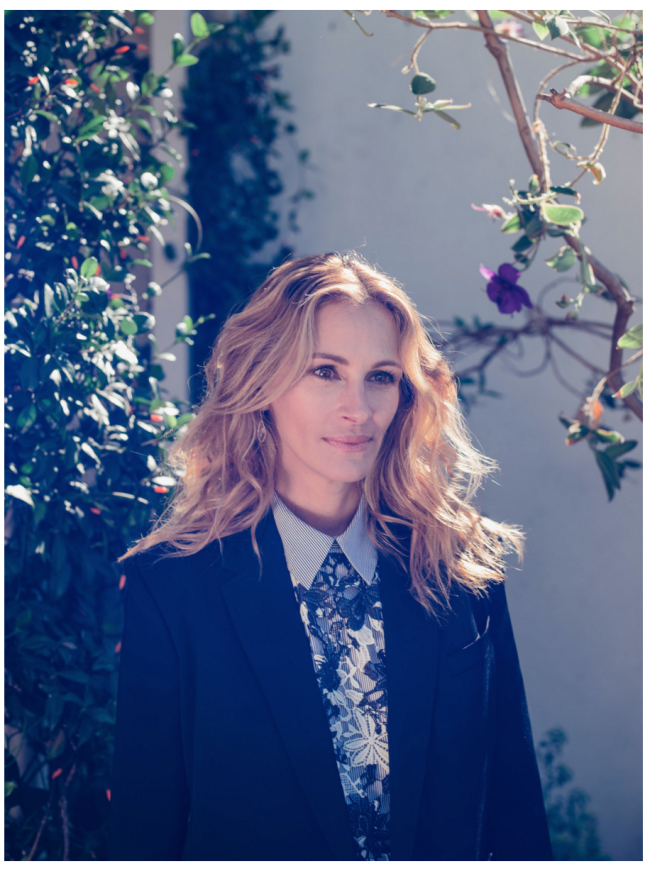
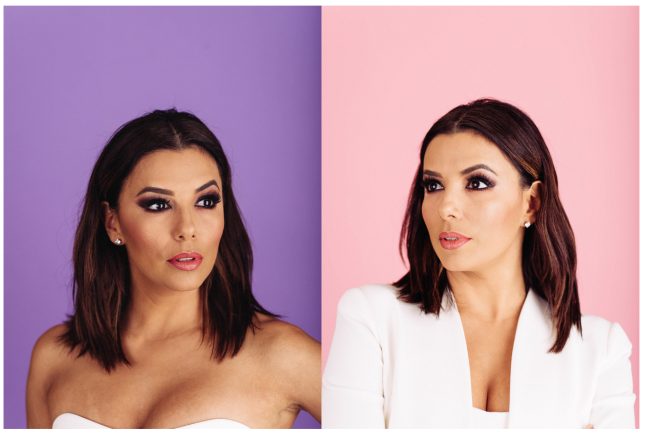
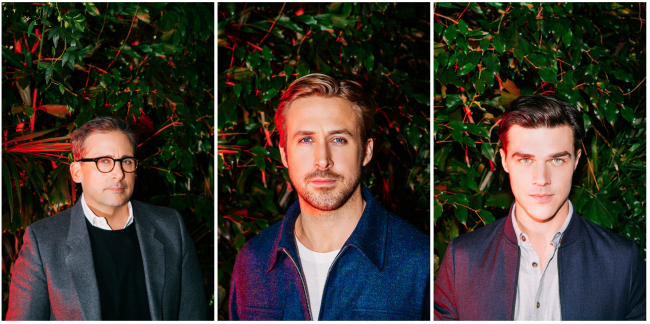
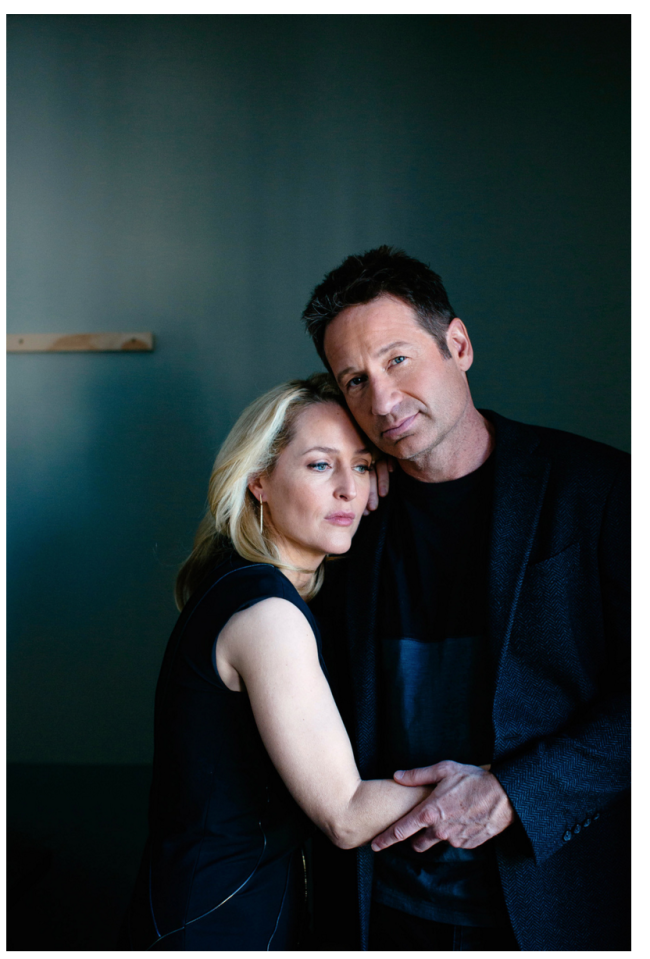
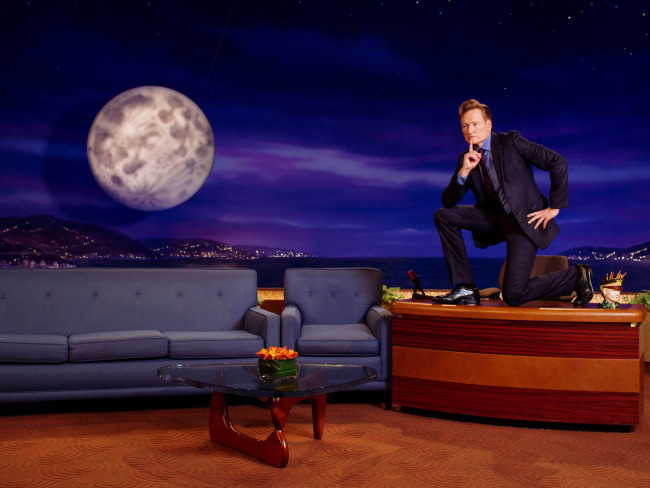
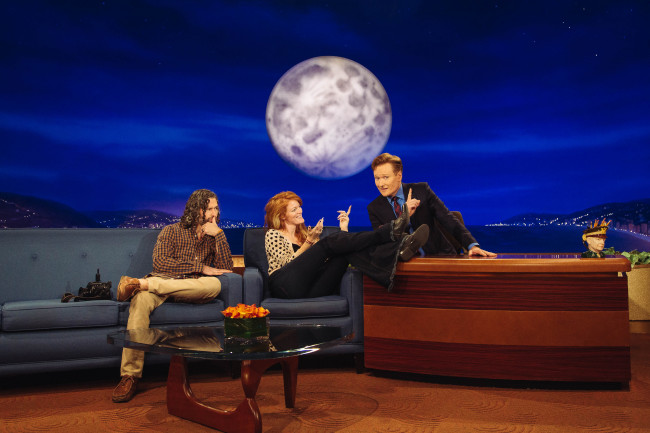
1 Comment
Excellent work an excellent post. Working as a team, I’m curious if they are able to bid with fees that compensate for two photographers or if it is a struggle to stay competitive, and the two of them are splitting fees that usually a single photographer would bill for.
Comments are closed for this article!